Weekends were always extra special when my Lola (grandmother) would prepare her famous Arroz Valenciana. While not exactly the Spanish paella that inspired it, this dish holds a special place in our family gatherings.
My mother would always tell stories of how she learned this recipe from her own mother, who adapted it during the years when saffron was scarce, cleverly substituting kasubha (safflower) to achieve that distinctive golden hue. What makes our version special is the addition of both glutinous and jasmine rice: a technique my Lola insists creates the perfect texture that keeps everyone coming back for seconds.
While traditional paella might be its distant Spanish cousin, our Arroz Valenciana has evolved into something uniquely Filipino, embracing local ingredients like coconut milk and patis to create a dish that perfectly represents our country's rich culinary heritage.
Jump to:
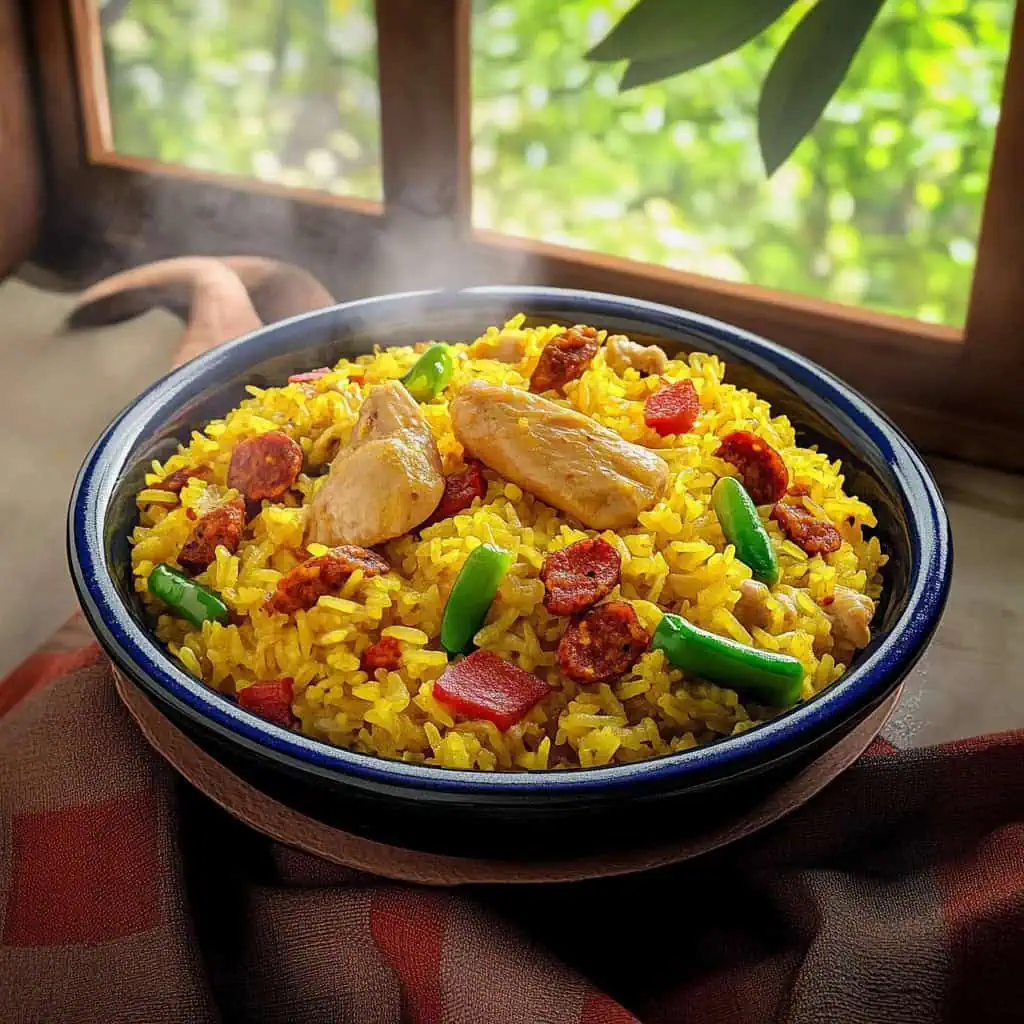
Why You'll Love This Recipe
- One-pot meal perfect for feeding a crowd
- Rich, aromatic flavors from saffron and coconut milk
- Flexible recipe that can be customized with your preferred proteins
- Makes any occasion feel special with its festive appearance
- Authentic Filipino-Spanish fusion dish with deep cultural roots
- Perfect balance of textures from the mixture of regular and sticky rice
Ingredients
This Arroz Valenciana combines ingredients that create perfect harmony in both flavor and texture. The mixture of regular and glutinous rice delivers that distinctly Filipino balance of fluffy yet slightly sticky grains.
Coconut milk adds creaminess while chicken broth provides savory depth. Saffron (or kasubha) gives the dish its signature golden color and subtle floral notes. The protein combination of chicken and chorizo creates a rich meaty base, with chorizo adding smoky depth and its vibrant red oils infusing the entire dish.
Bell peppers and peas bring pops of color and freshness, while fish sauce adds that crucial umami element that ties everything together.
It's a thoughtful blend of Spanish influence and Filipino innovation, where each ingredient plays an essential role in creating a truly festive one-pot meal.
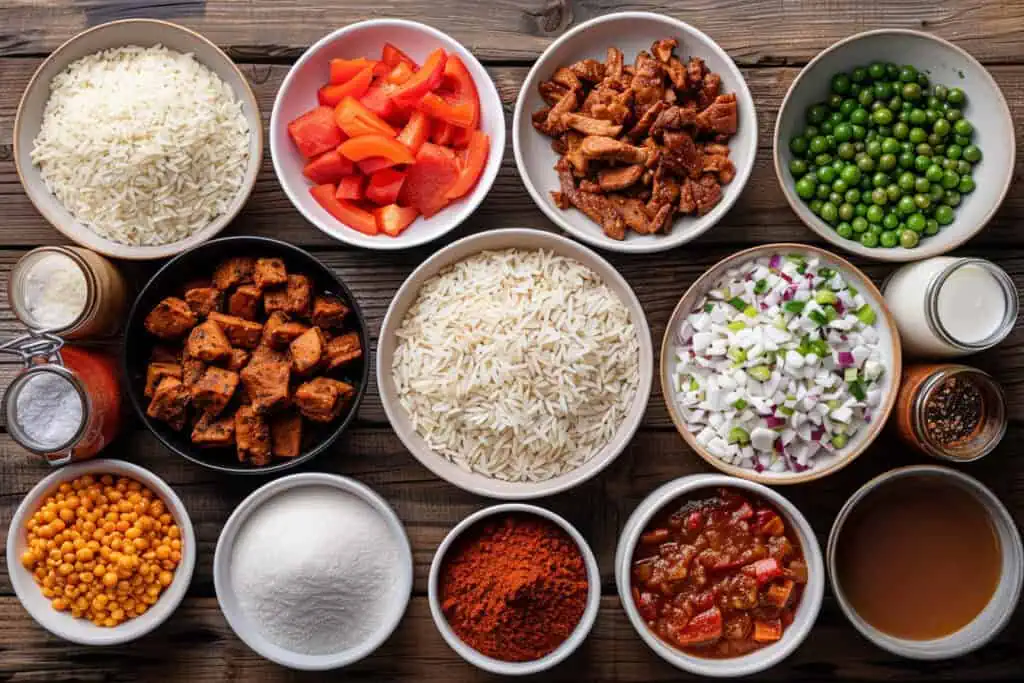
For the Rice Base:
- 1½ cups long-grain rice
- ½ cup glutinous rice
- 1½ cups coconut milk
- 1½ cups chicken broth
- ¼ teaspoon saffron threads or 1 teaspoon kasubha (safflower)
For the Meat and Aromatics:
- ½ pound boneless chicken thighs, cut into 1-inch pieces
- 5 ounces Chorizo de Bilbao, sliced diagonally
- 1 medium onion, finely chopped
- 3 cloves garlic, minced
- 2 tablespoons tomato paste
For the Vegetables and Seasonings:
- 1 red bell pepper, diced
- 1 green bell pepper, diced
- ½ cup green peas
- 2 tablespoons fish sauce
- 1 tablespoon cooking oil
Equipment
- Large heavy-bottomed pan or paella pan (Kawali) - This ensures even heat distribution, preventing hot spots that could cause uneven cooking or burning. The wide surface area allows the rice to cook consistently.
- Fine-mesh strainer - Essential for thoroughly washing the rice to remove excess starch, which helps achieve perfectly cooked grains that aren't too sticky.
- Measuring cups and spoons - For precise measurements that maintain the proper ratio of liquid to rice, crucial for ideal texture.
- Sharp knife - Needed for uniform cutting of chicken, chorizo, and vegetables, ensuring even cooking throughout.
- Wooden spoon - Allows gentle stirring without breaking the delicate rice grains or scratching your cooking surface.
- Tight-fitting lid - Critical for trapping steam during cooking, which helps the rice absorb liquid properly and cook evenly.
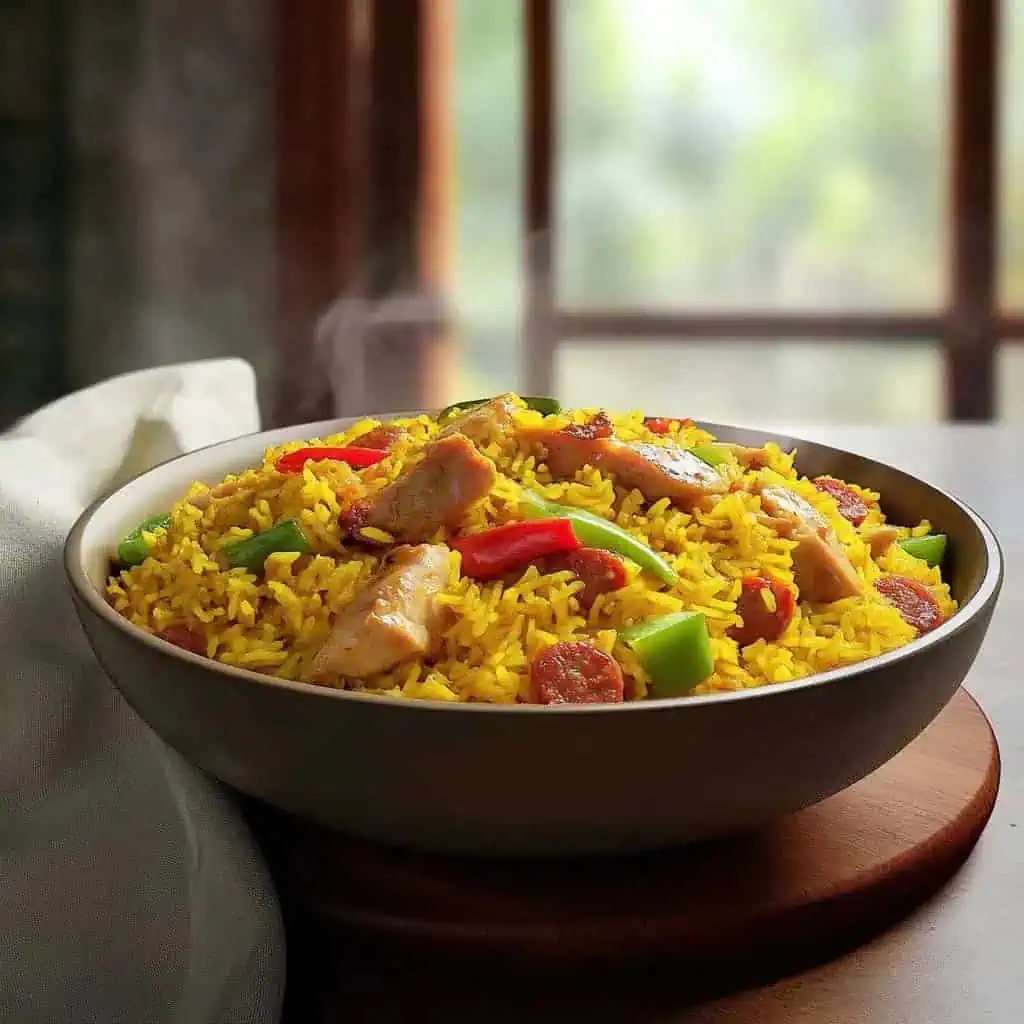
How To Make
- Rinse both regular and sticky rice together in cold water until the water runs clear. Drain well and set aside.
- Heat oil in a large, deep pan over medium heat. Cook onions and garlic until soft and fragrant, about 2 minutes. Add chicken pieces and cook until they start turning light brown, around 5 minutes.
- Add the sliced chorizo and cook for 3 minutes until it releases its red oils. Stir in the saffron (or kasubha) and cook for 1 minute. Pour in the fish sauce and cook for another minute.
- Add your drained rice to the pan and gently stir to coat with the oils for 2 minutes. Pour in the coconut milk, chicken broth, and tomato paste. Mix well until the tomato paste is fully blended.
- Add half of your bell peppers and all the green peas. Stir gently. Let it come to a boil, then lower the heat. Cover the pan tightly and cook on low heat for 15-20 minutes, or until the rice is tender and has absorbed most of the liquid.
- Once done, turn off the heat but keep the pan covered. Let it rest for 5 minutes – this helps make the rice perfect. After resting, gently fluff the rice with a fork.
- Top with the remaining bell peppers and serve hot. For special occasions, line your serving plate with banana leaves before adding the rice.
Important: Don't lift the lid while cooking. This keeps all the steam inside, helping the rice cook evenly. If the rice looks a bit wet at the end, leave it covered for an extra 5 minutes. If it's too dry, sprinkle in a few tablespoons of hot water and let it steam for a few more minutes.

Tips from Lola's Kitchen
For Perfect Rice:
- Toast the rice grains in the pan for 2-3 minutes before adding liquid for a nuttier, more complex flavor
- Use homemade chicken stock instead of store-bought for deeper, richer flavor
- When washing rice, rub the grains gently between your fingers to remove excess starch
- The resting period after cooking is non-negotiable—it allows moisture to distribute evenly
For Enhanced Flavor:
- Bloom saffron in warm (not hot) broth for 10 minutes before adding to release maximum color and flavor
- If using bone-in chicken, brown it first, then remove, continue with the recipe, and add it back when adding the liquid
- For a more authentic taste, use coconut cream instead of milk in the last 5 minutes of cooking
- A squeeze of fresh calamansi juice just before serving brightens all flavors
For Special Occasions:
- Line serving platters with banana leaves for an aromatic, traditional presentation
- Garnish with hard-boiled eggs cut in halves for added protein and visual appeal
- Toasted cashews or peanuts add wonderful texture when sprinkled on top
- For festive gatherings, arrange bell peppers in a decorative pattern on top
Substitutions
- Saffron: Kasubha (safflower) is the traditional Filipino substitute. Turmeric powder (½ teaspoon) works well too, though it has a different flavor profile.
- Chorizo de Bilbao: Spanish chorizo or even Chinese lap cheong sausage can work. In a pinch, use smoked ham with ½ teaspoon of paprika for color and flavor.
- Rice: If glutinous rice is unavailable, use all jasmine or long-grain rice, but reduce liquid by ¼ cup.
- Coconut Milk: Heavy cream mixed with chicken stock can substitute, though the flavor will be different. Cashew cream is a good non-dairy alternative.
- Chicken: Turkey, duck, or even firm white fish like cod work well. For vegetarians, extra-firm tofu or tempeh are excellent protein alternatives.
- Bell Peppers: Any colorful vegetables work—carrots, corn, or even diced zucchini add nice color and nutrition.
- Fish Sauce: Soy sauce can substitute, though the flavor profile will change slightly. Start with 1 tablespoon and adjust to taste.
Troubleshooting
- Rice is too wet: Remove the lid and cook on low heat for an additional 2-3 minutes, being careful not to burn the bottom. Next time, reduce your liquid by ¼ cup.
- Rice is too dry: Add ¼ cup of hot broth or water, cover, and let steam for 5 minutes off the heat. Be sure to always use the correct liquid-to-rice ratio.
- Rice is sticking to the bottom: This usually happens when heat is too high. Next time, ensure you're using a heavy-bottomed pan and keep heat consistently low after the initial boil.
- Uneven cooking: Don't stir after covering the rice—this disrupts the steam distribution. Make sure your lid fits tightly and avoid peeking during cooking.
- Bland flavor: Adjust with fish sauce at the end of cooking, adding 1 teaspoon at a time and tasting between additions. A squeeze of calamansi or lemon can also brighten flavors.
- Rice not fully cooked: If grains are still hard after the cooking time, add ¼ cup hot liquid, cover, and cook on low for another 5-7 minutes.
Storage & Reheating
- Refrigerator: Store in an airtight container for up to 3 days. Press plastic wrap directly onto the surface of the rice to prevent drying.
- Freezer: Portion into freezer-safe containers and store for up to 2 months. Label with the date and contents.
- Reheating Methods:
- Microwave: Place a portion in a microwave-safe bowl with 1-2 tablespoons of water. Cover with a damp paper towel and heat for 2-3 minutes, stirring halfway through.
- Stovetop: Add 2 tablespoons of water or broth to a non-stick pan. Add the cold rice, cover, and heat on low for 5-7 minutes, stirring occasionally.
- Steaming: Place refrigerated rice in a heat-proof bowl, cover with foil, and steam for 5-7 minutes in a bamboo steamer or metal steamer basket.
- Oven: For larger portions, place in an oven-safe dish, sprinkle with 2-3 tablespoons of water, cover tightly with foil, and heat at 350°F for 15-20 minutes.
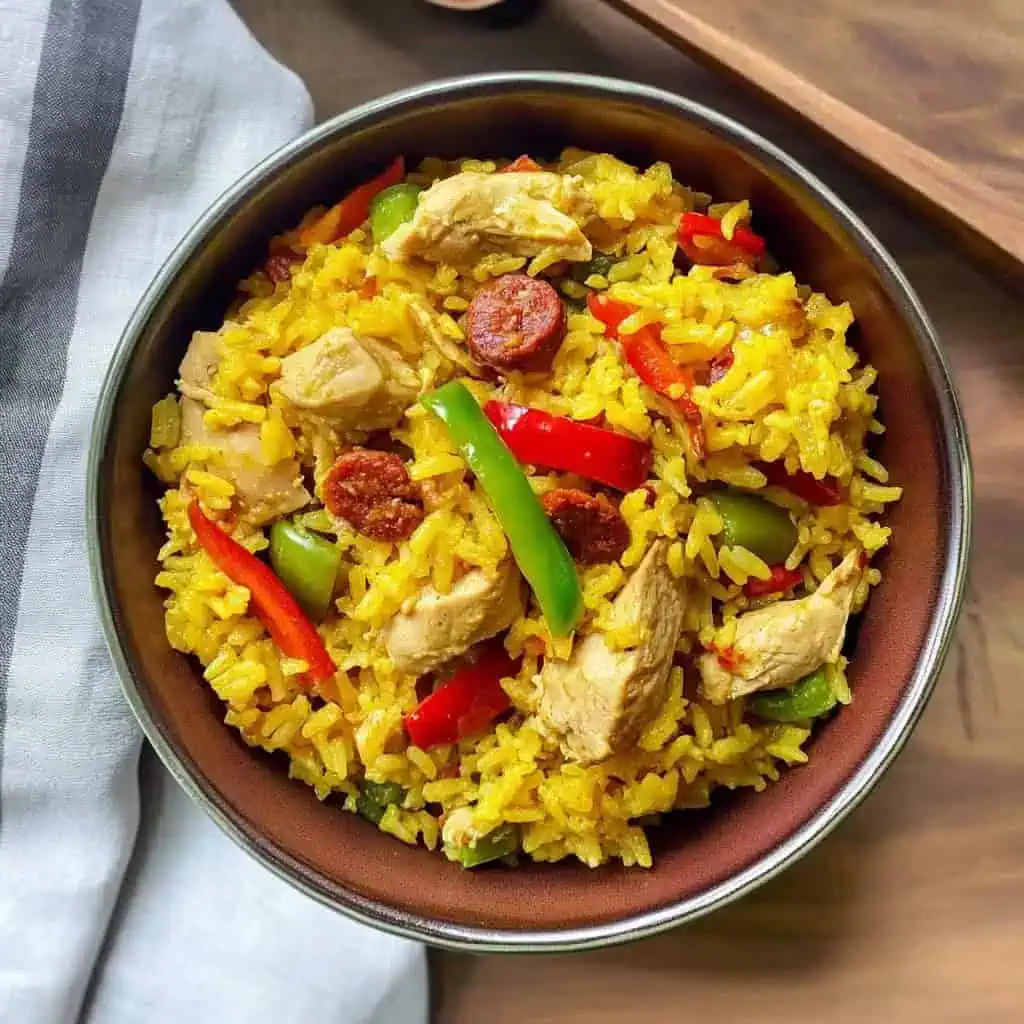
FAQ
Can I make this in advance for a party?
Yes, you can prepare it up to 24 hours ahead. Store in the refrigerator and reheat with a splash of broth. Add fresh bell peppers and herbs just before serving to maintain color and freshness.
Why mix two types of rice?
The combination creates the perfect texture—the glutinous rice provides pleasant stickiness while the regular rice maintains fluffiness and separate grains. This balance is a signature element of Filipino Arroz Valenciana.
How can I make this dish less rich?
Replace half or all of the coconut milk with additional chicken broth. The dish will be lighter but still flavorful. You can also use light coconut milk instead of full-fat.
Can I cook this in a rice cooker?
Yes, but for best results, sauté all ingredients first in a separate pan, then transfer to the rice cooker with the liquid. Use the regular rice setting and allow for the natural release of pressure when done.
How do I know when it's done cooking?
The rice should be tender, and most of the liquid should be absorbed. A few small holes might appear on the surface of the rice, and the grains should be separate, not mushy.
Is this dish traditionally spicy?
No, traditional Arroz Valenciana is not spicy, but you can add heat by incorporating chopped bird's eye chilies or a teaspoon of red pepper flakes during cooking.
What makes this different from Spanish paella?
Filipino Arroz Valenciana uses coconut milk, a mix of glutinous and regular rice, and Filipino seasonings like fish sauce. It also typically contains chicken and chorizo rather than the variety of seafood often found in Spanish paella.
Can I add seafood to this recipe?
Absolutely! Add ½ pound of mixed seafood like shrimp, mussels, or squid in the last 5-7 minutes of cooking to prevent overcooking. You may also want to incorporate a seafood stock for enhanced flavor.
Related
Looking for other recipes like this? Try these:

Filipino Arroz Valenciana
Equipment
- Large heavy-bottomed pan or paella pan (Kawali) For even heat distribution
- Fine-mesh strainer (salaan) For washing rice thoroughly
- Measuring cups and spoons (Panukat) For precise measurements
- Sharp knife (kutsilyo) For prep work
- Wooden spoon (sandok na kahoy) For gentle stirring without breaking the rice
- Tight-fitting lid To ensure proper steam cooking
Ingredients
For the Rice Base
- 1½ cups long-grain rice Bigas na mahaba
- ½ cup glutinous rice Malagkit
- 1½ cups coconut milk Gata
- 1½ cups chicken broth Sabaw ng manok
- ¼ teaspoon saffron threads Asafrán or 1 teaspoon kasubha (safflower)
For the Meat and Aromatics
- ½ pound boneless chicken thighs Pitso ng manok, cut into 1-inch pieces
- 5 ounces Chorizo de Bilbao sliced diagonally
- 1 medium onion Sibuyas, finely chopped
- 3 cloves garlic Bawang, minced
- 2 tablespoons tomato paste Patis ng kamatis
For the Vegetables and Seasonings
- 1 red bell pepper Pulang bell pepper
- 1 green bell pepper Berdeng bell pepper
- ½ cup green peas Gisantes
- 2 tablespoons fish sauce Patis
- 1 tablespoon cooking oil
Instructions
- First, rinse both regular and sticky rice together in cold water until the water runs clear. Drain well and set aside.
- Heat oil in a large, deep pan over medium heat. Cook onions and garlic until soft and fragrant, about 2 minutes. Add chicken pieces and cook until they start turning light brown, around 5 minutes.
- Add the sliced chorizo and cook for 3 minutes until it releases its red oils. Stir in the saffron (or kasubha) and cook for 1 minute. Pour in the fish sauce and cook for another minute.
- Add your drained rice to the pan and gently stir to coat with the oils for 2 minutes. Pour in the coconut milk, chicken broth, and tomato paste. Mix well until the tomato paste is fully blended.
- Add half of your bell peppers and all the green peas. Stir gently. Let it come to a boil, then lower the heat. Cover the pan tightly and cook on low heat for 15-20 minutes, or until the rice is tender and has absorbed most of the liquid.
- Once done, turn off the heat but keep the pan covered. Let it rest for 5 minutes – this helps make the rice perfect. After resting, gently fluff the rice with a fork.
- Top with the remaining bell peppers and serve hot. For special occasions, line your serving plate with banana leaves before adding the rice.
- Remember: Don't lift the lid while cooking – this keeps all the steam inside, helping the rice cook evenly. If the rice looks a bit wet at the end, leave it covered for an extra 5 minutes. If it's too dry, sprinkle in a few tablespoons of hot water and let it steam for a few more minutes.
Tips from Lola's Kitchen
- Toast the rice grains before adding liquid for nuttier flavor
- Use homemade chicken stock for deeper flavor
- Don't skip the resting period - it's crucial for perfect texture
- If using bone-in chicken, add 5-7 minutes to cooking time
- For better color, bloom saffron in warm broth before adding
Nutrition
The Story Behind Filipino Arroz Valenciana
The story of Arroz Valenciana weaves together the rich tapestry of Filipino colonial history and our love for transforming foreign dishes into something uniquely our own. This golden-hued rice dish traces its roots to Spain's famous Paella Valenciana, arriving on Philippine shores during the three centuries of Spanish colonization that profoundly shaped our culinary landscape.
In the bustling kitchens of Filipino homes, this adaptation took on a distinctly local character. Where Spanish paella relies on short-grain rice and saffron, Filipino cooks brilliantly incorporated local ingredients, combining glutinous rice (malagkit) with regular rice for that perfect sticky-yet-fluffy texture that Filipinos love. The addition of creamy coconut milk (gata), a Southeast Asian staple, gave birth to a dish that perfectly bridges Spanish and Filipino flavors.
What makes our Arroz Valenciana truly special is how it reflects the Filipino talent for culinary innovation. When expensive Spanish saffron was scarce, resourceful home cooks turned to kasubha (safflower) as an affordable alternative, proving that necessity truly is the mother of invention. The traditional Chorizo de Bilbao remained, but it found harmony with Asian seasonings like patis (fish sauce), creating a unique flavor profile that's neither purely Spanish nor traditionally Filipino.
Today, this dish holds a revered place in Filipino celebrations, particularly during Christmas Eve's Noche Buena and New Year's Media Noche. Its festive appearance – studded with colorful bell peppers and brightened by its signature golden hue – makes it a natural centerpiece for special occasions. Each region in the Philippines has its own version, some adding coconut milk, others incorporating local seafood, but all maintaining that distinctive yellow rice base that signals a special meal is about to be shared.
The evolution of Arroz Valenciana from its Spanish origins to its beloved place in Filipino cuisine perfectly exemplifies how our culture embraces foreign influences while making them distinctly our own. It's more than just a rice dish; it's a delicious testament to Filipino culinary creativity and our ability to adapt and innovate while honoring traditional flavors.
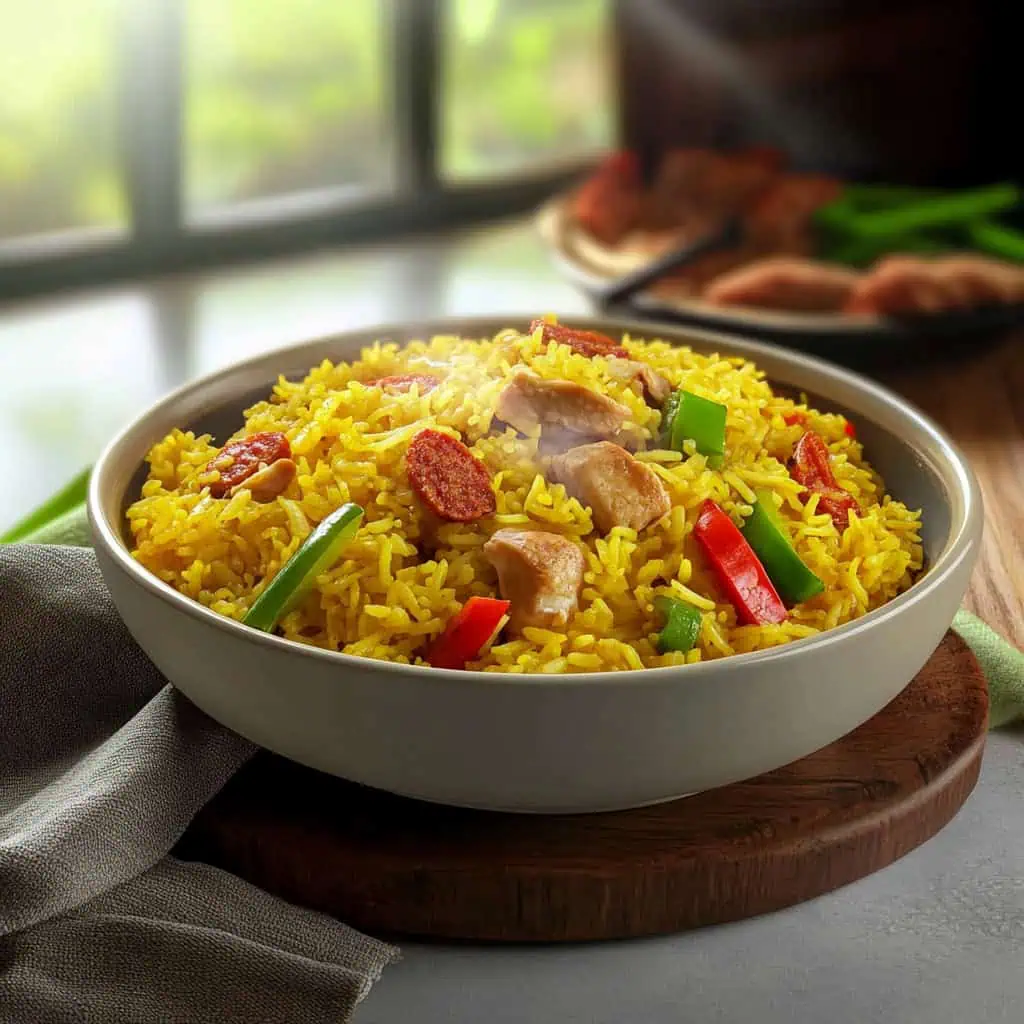

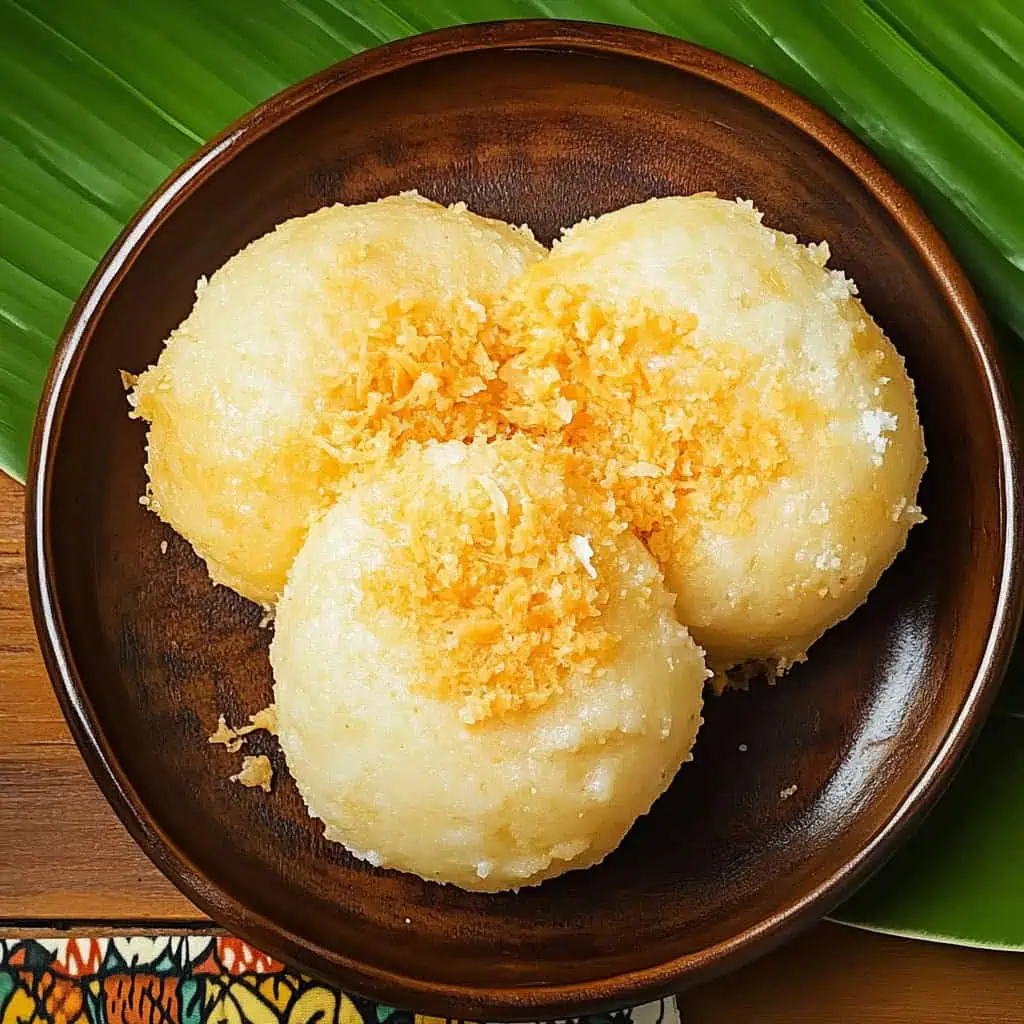
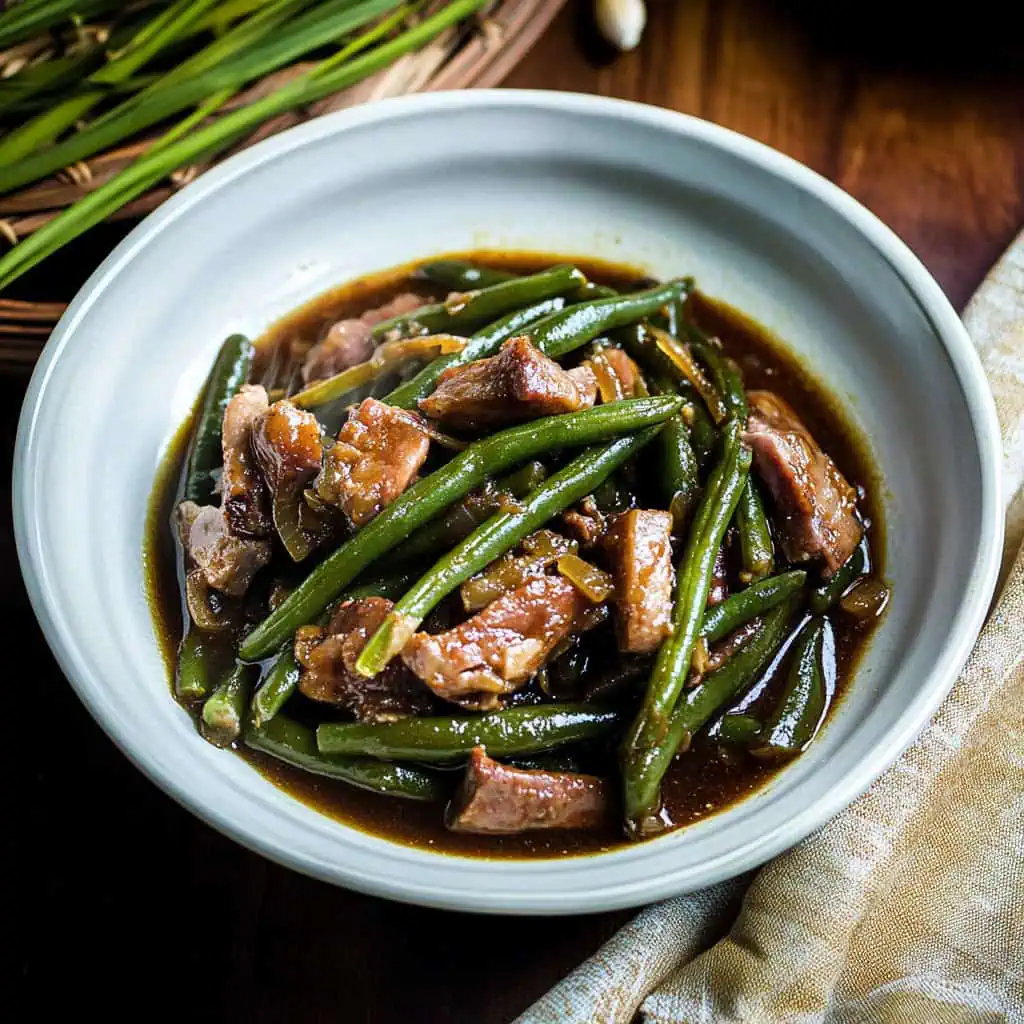

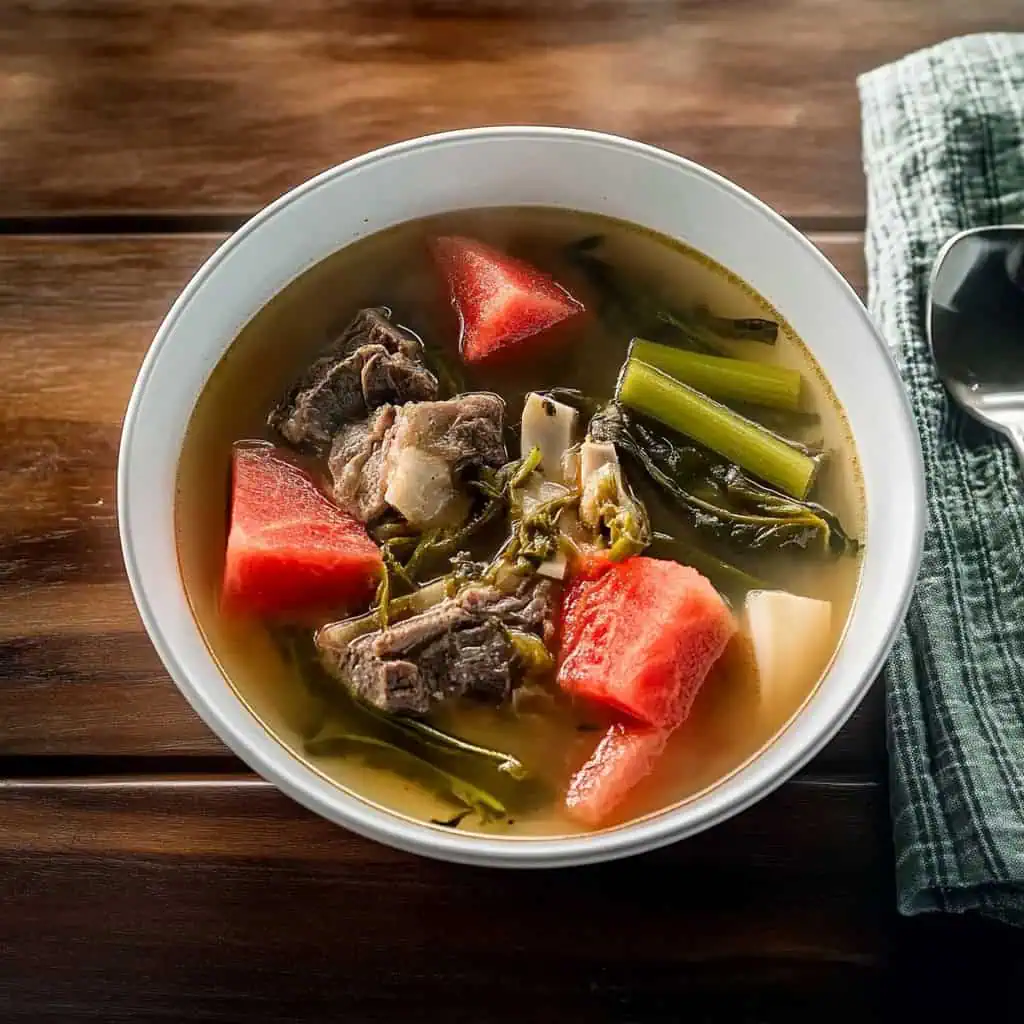
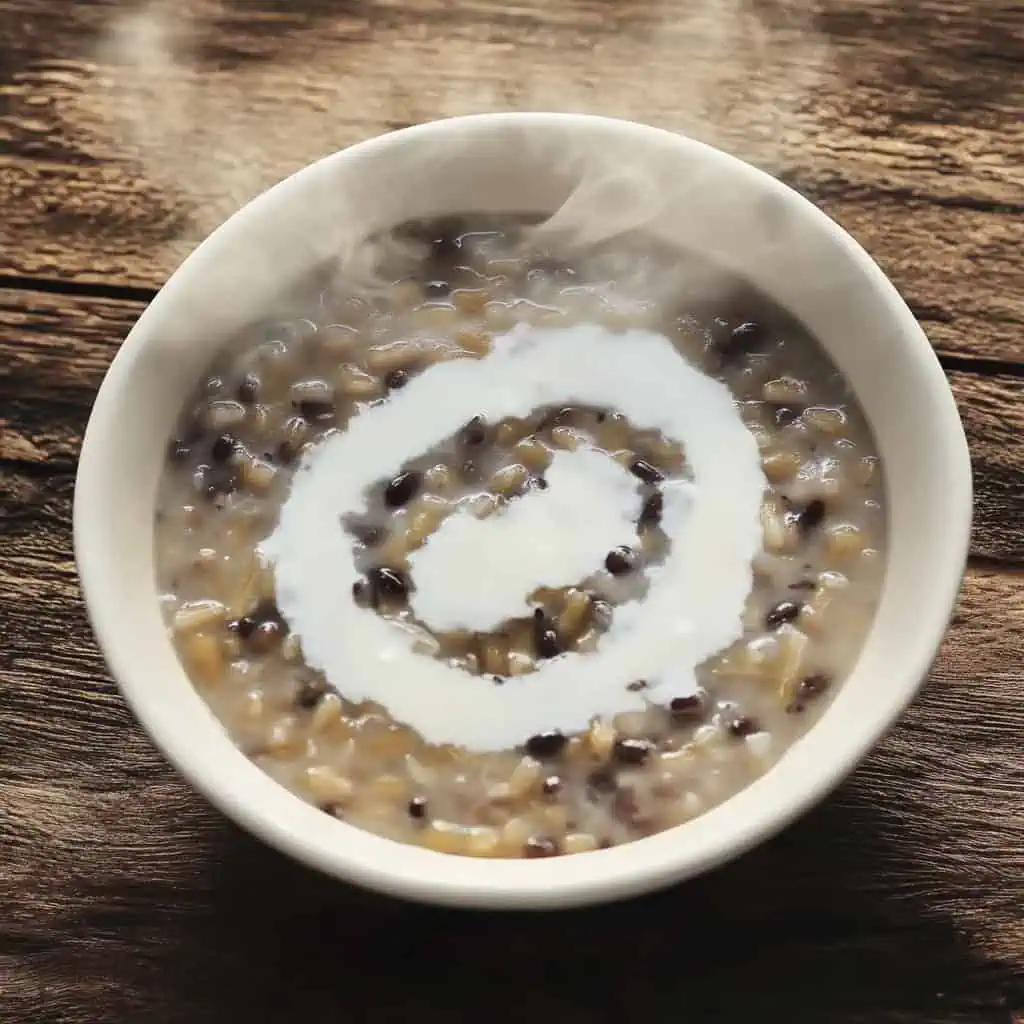
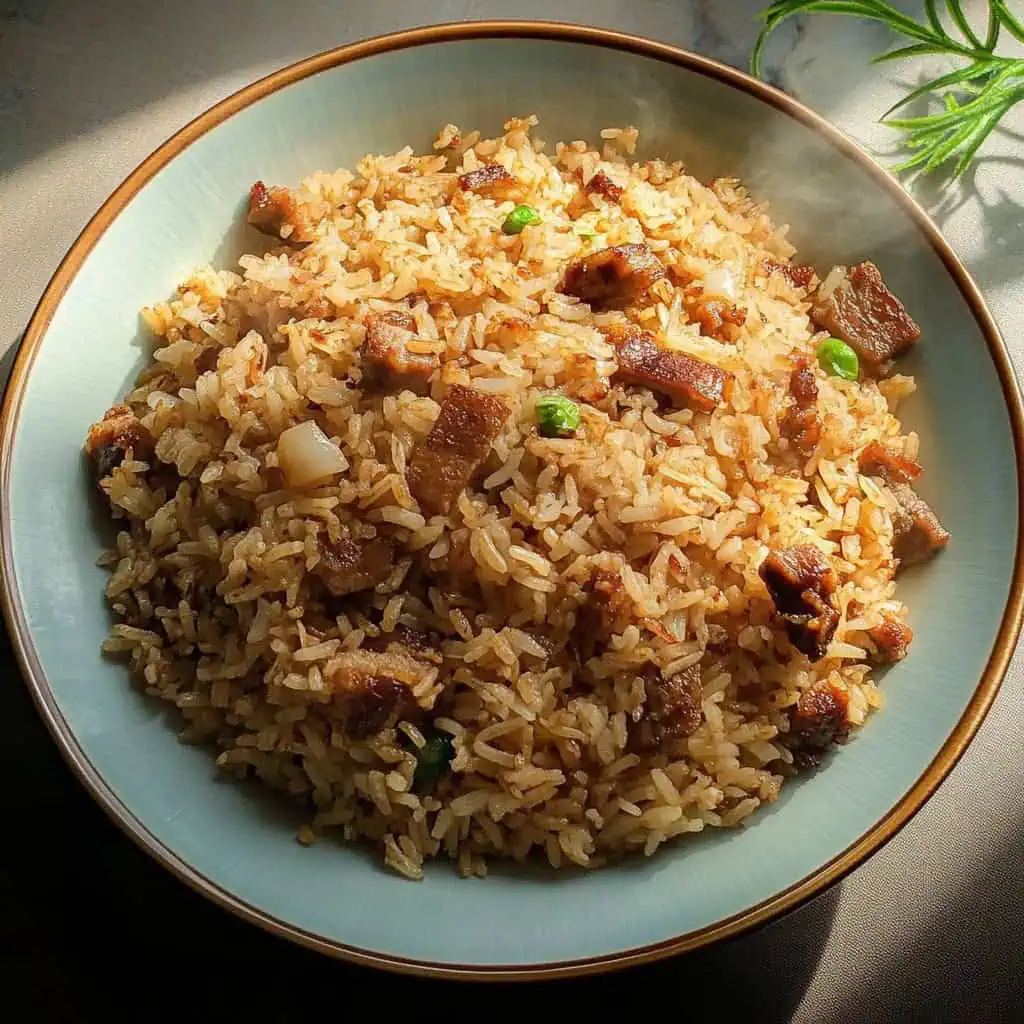
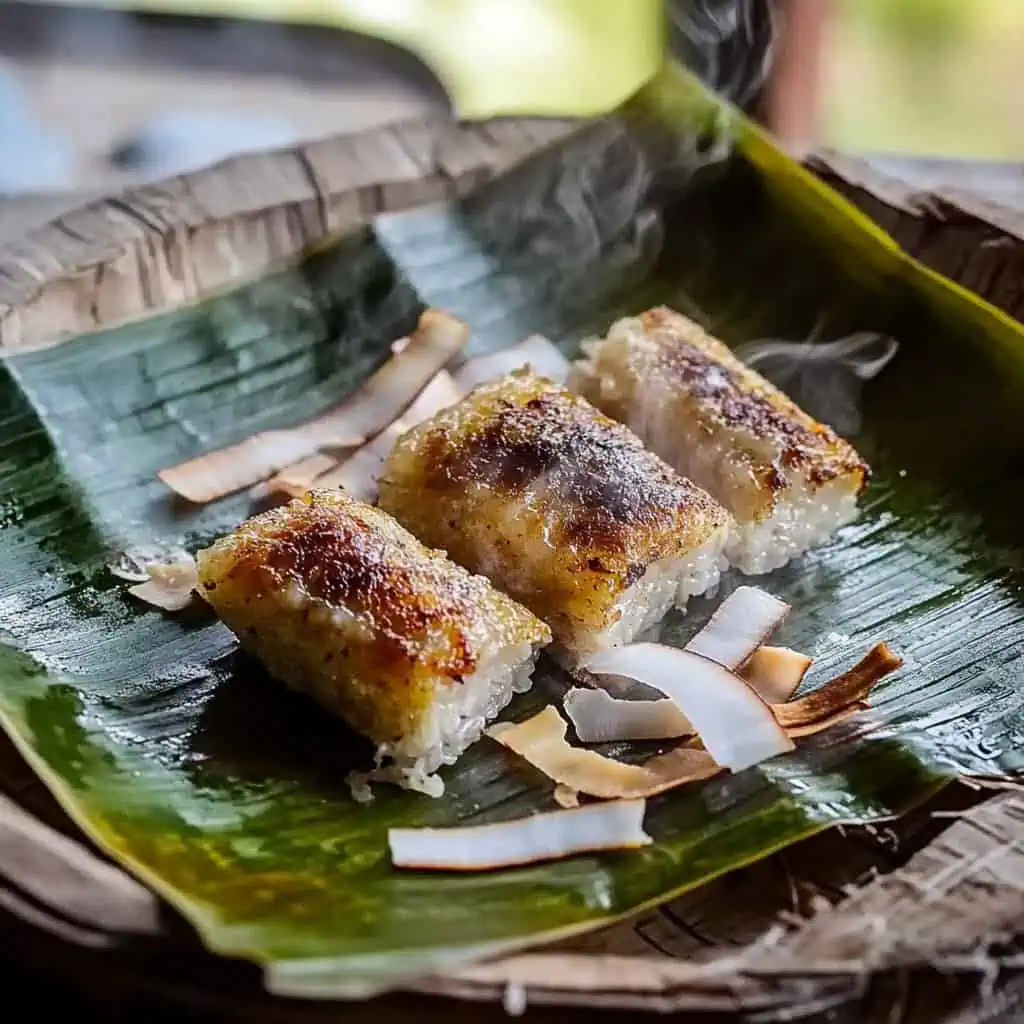

Comments
No Comments